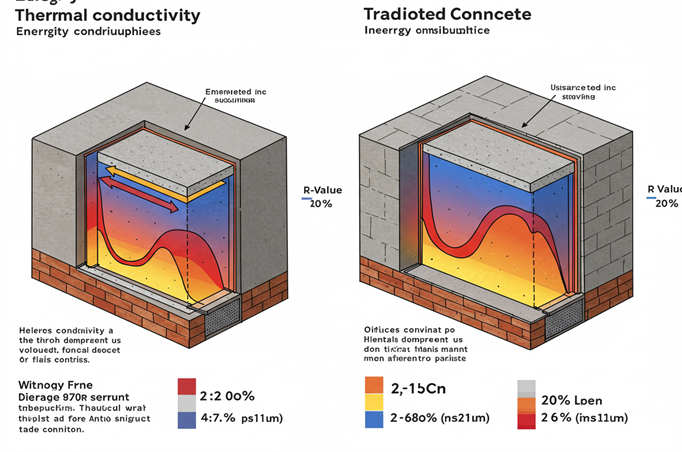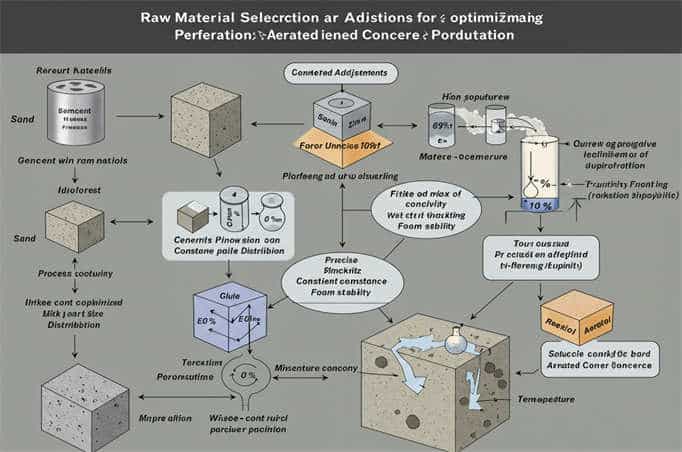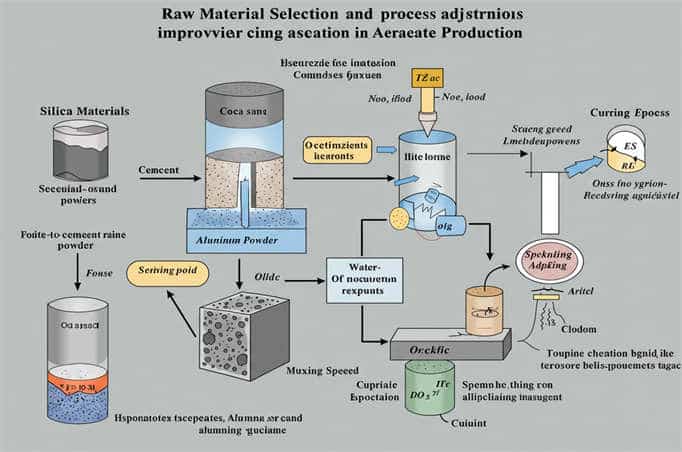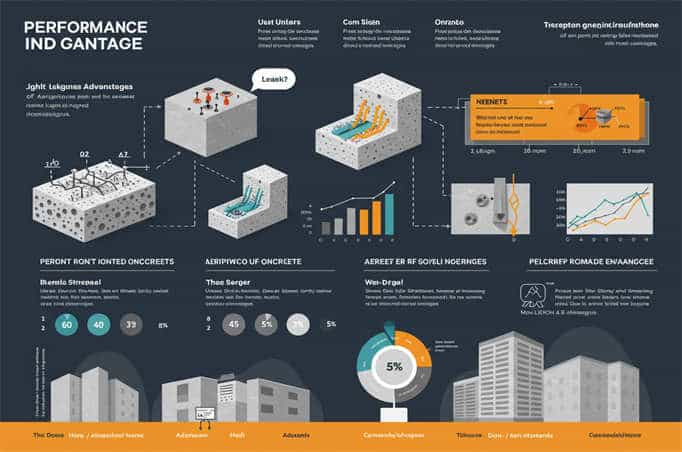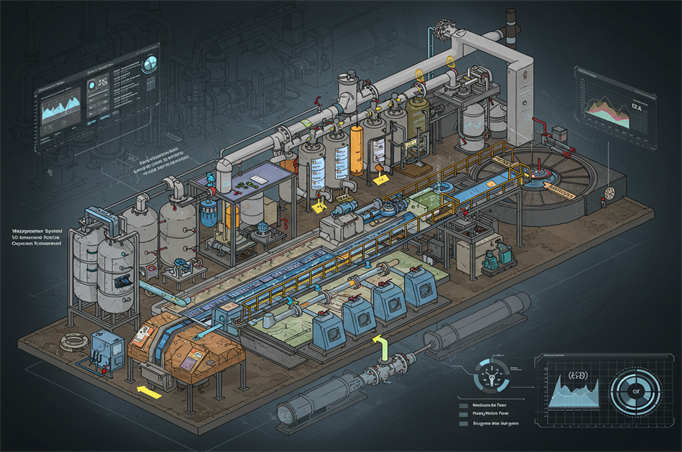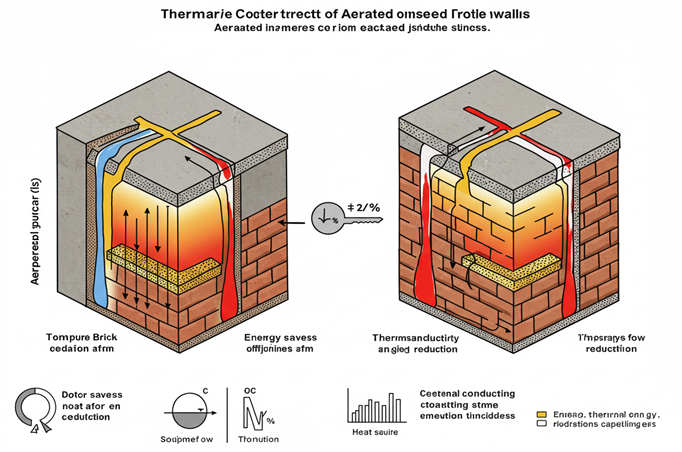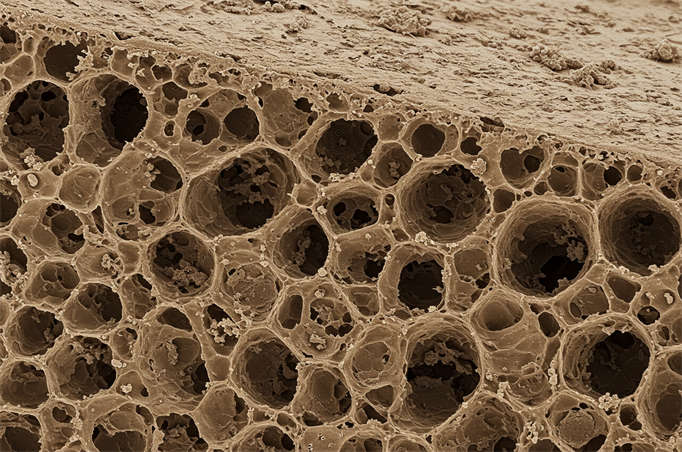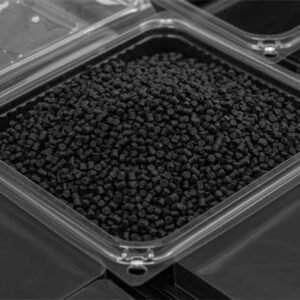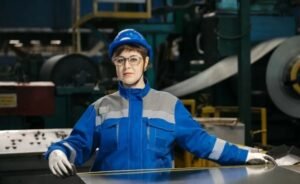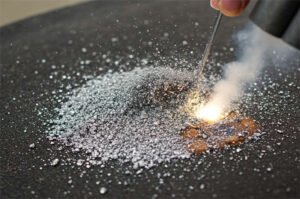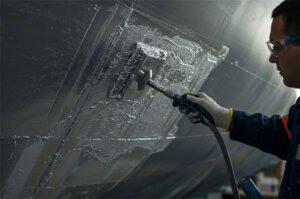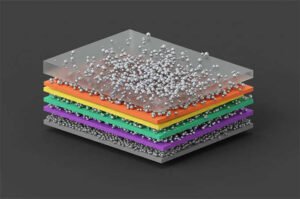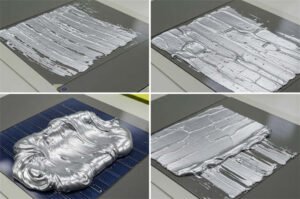At フィバースター新素材, we are dedicated to providing high-quality aluminum paste materials to the autoclaved aerated blocks (AAC) manufacturing industry. AAC is revolutionizing how we think about construction materials, offering exceptional benefits in strength, energy efficiency, and sustainability. As the demand for lighter, more eco-friendly building materials rises, AAC stands at the forefront of this transformation. Our aluminum paste products play a critical role in ensuring AAC blocks maintain their unique properties—such as lightweight construction, excellent thermal insulation, and high fire resistance—while improving manufacturing efficiency and cost-effectiveness.
Due to their impressive structural advantages, autoclaved aerated blocks have quickly become the preferred choice for residential, commercial, and high-rise buildings. With just 500-800 kg/m³ density, AAC blocks are much lighter than traditional clay bricks or concrete, reducing the overall load on building foundations and contributing to seismic stability. Moreover, the superior insulation properties of AAC help lower energy consumption by as much as 30%-50%, making it an ideal material for achieving energy-efficient, sustainable buildings.
This blog will explore the many facets of autoclaved aerated blocks, from their production process and core advantages to their growing application in high-rise buildings. As a supplier of aluminum paste, we are proud to contribute to the continued success and development of AAC as an essential building material. Whether you are an AAC manufacturer or a construction professional, understanding the intricate relationship between aluminum paste and AAC production is key to unlocking the full potential of this revolutionary material.
Autoclaved Aerated Blocks (AAC)
Basic Definition and Features
Autoclaved aerated blocks (AAC) are lightweight, porous building materials made from siliceous materials (such as sand, fly ash, etc.) and calcareous materials (such as cement and lime). These materials are combined with a gas agent (such as aluminum powder) and cured under high pressure and temperature. The core features of AAC include:
- 軽量かつ高強度: With a 500-800 kg/m³ density, AAC weighs only about 1/4 to 1/3 of clay bricks, reducing building weight by over 40% and improving seismic resistance.
- Thermal Insulation: The thermal conductivity of AAC is 0.11-0.18 W/(m·K), which is 1/6 of regular concrete, and a 200mm thick wall offers the same insulation as a 490mm thick clay brick wall.
- Excellent Workability: AAC can be sawed, nailed, drilled, and carved, providing flexibility in construction.
- Fire and High-Temperature Resistance: AAC can withstand temperatures up to 600°C, meeting national fireproof standards.
- Sound Insulation: The closed air voids inside AAC reduce noise transmission, making it superior to traditional materials for partition walls.
Production Process and Technological Innovations
- 生産プロセス: Raw materials undergo mixing, casting, foaming, and cutting and are cured under high pressure and temperature. The key steps include gas formation to create pores and high-pressure steam curing.
- Structural Innovations: Some patented designs enhance block alignment efficiency with projections and recessed parts, while grooves improve stability. Some products feature soundproof or insulation panels on the side surfaces.
応用分野
- Building Types: AAC is widely used for interior and exterior wall partition walls in residential and commercial buildings, particularly for high-rise frame structures, earthquake-prone areas, and soft soil foundations.
- Limitations: AAC should not be used in regions permanently submerged below ±0.00 level, in strong acidic or alkaline environments, or on surfaces exposed to temperatures exceeding 80°C.
Comparison of Advantages and Disadvantages
| 利点 | 欠点 |
|---|---|
| Energy-saving and environmentally friendly (high utilization rate of industrial waste) | High water absorption (requires waterproofing treatment, prohibited in humid areas) |
| Convenient construction (standardized dimensions, reduced wet operations) | Low surface strength (easily damaged, transportation requires caution) |
| Low comprehensive cost (reduced foundation investment, increased usable area) | Limited durability (prone to cracking with long-term exposure) |
Quality Standards and Testing
- Testing Indicators: Dry density, compressive strength, frost resistance, drying shrinkage, and radioactivity must meet GB/T 11969-2020 standards.
- Construction Guidelines: Mortar strength should be ≥M5, joint thickness ≥80%, and vertical block misalignment should not exceed 150mm.
Market and Brands
Well-known manufacturers in China, including Guangxi Zhongyu and Guangzhou Youjia, offer production capacities of 300,000 cubic meters per year. Product sizes range from 600×240×100mm to 600×240×300mm, with customized panels for enhanced soundproofing and insulation.
Application of Autoclaved Aerated Blocks in High-Rise Buildings
The following analysis explores the use of AAC in high-rise buildings, emphasizing its advantages, construction key points, and real-world examples:
Core Advantages in High-Rise Applications
- Lightweight and High Strength, Reducing Structural Load: With a density of 500-700 kg/m³, AAC is 1/5 the weight of standard concrete and 1/3 the weight of clay bricks, reducing the building weight by over 40%. For example, a 33-story residential building using AAC-optimized foundation and beam-column sizes saves on material costs.
- Superior Seismic Resistance: AAC’s lightweight nature reduces seismic inertia, as demonstrated in the Tangshan earthquake, where AAC buildings sustained minimal damage while brick-concrete structures collapsed.
- Energy-Efficient Insulation: With a thermal conductivity of 0.09-0.22 W/(m·K), a 200mm thick AAC wall offers insulation equivalent to a 490mm thick clay brick wall, reducing air conditioning and heating energy consumption by 30% to 50%.
- Efficient Construction: AAC is easy to cut, nail, and drill, making it suitable for complex high-rise structures. Standard sizes minimize on-site cutting, improving construction efficiency.
Technical Requirements and Measures for High-Rise Applications
- Wall Structure Design: Embed reinforcing steel bars (Φ6 at 500mm intervals) at connections to concrete structures to enhance overall integrity. Add concrete beams at window sills and lintels to prevent shrinkage cracks.
- Construction Process Control:
- Moisture Content Management: To avoid shrinkage cracks, control wall moisture content at 10%- 15% (autoclaved AAC) or 15%- 20% (fly ash-based AAC).
- Joint Treatment: Ensure joint fill ratio ≥90%, with a thickness of 8-12mm; limit daily construction height to ≤1.4m. In rainy or hot weather, spray water for curing.
- Top Sloping Construction: Leave a 20cm gap below beams, and after 7 days, fit with 60° inclined blocks to secure the top.
- Waterproofing and Durability: Avoid using AAC below ±0.00 in submerged areas, perform water-shedding treatment on exterior walls, and use elastic coatings for cracking resistance.
Case Studies
- Turpan High-Rise Residential (80m): Used AAC blocks to fill shear walls in a curved exterior design, with no cracks in the walls and energy savings meeting standards.
- Guangdong Yinhai Plaza (33 Stories): Interior partition walls were entirely AAC, reducing construction time by 20% through optimized processes.
- Beijing High-Rise Office Building: AAC exterior walls and external insulation systems reduced building energy consumption by 35% and earned green building certification.
Limitations and Solutions
- Strength Limits: Compressive strength typically ranges from A3.5 to A5.0, making AAC suitable only for non-load-bearing partition walls. Use AAC with a strength rating of A7.5 or higher for load-bearing walls or a composite structure.
- Water Absorption: With a water absorption rate of 20% to 30%, AAC walls should be treated with bonding agents and waterproof mortar.
- Transportation and Storage: Limit stacking to ≤1.5m to prevent rain exposure and damage.
Future Development Trends
- 技術革新: Develop high-strength (A7.5-A10) AAC for load-bearing walls and low-shrinkage (dry shrinkage ≤0.4mm/m) AAC to expand its application.
- Modular Integration: Promote prefabricated AAC insulation and decorative panels to reduce on-site wet work.
- Policy Support: In line with the “dual carbon” targets, AAC’s market share in high-rise buildings is expected to exceed 60% by 2025.
Cost Analysis for AAC in High-Rise Applications
The cost analysis for AAC in high-rise buildings considers material, labor, transportation, and optimization measures:
Cost Breakdown
- Direct Costs:
- Material Cost: 60%-70% of total cost, including:
- AAC: $28.72/m³ (calculated at 35 blocks/m³, loss rate 0.6%, price per block $49.80/m³).
- Mortar: $9.48/m³ (M10 mortar consumption 0.081m³, price $3.30/ton).
- Other Auxiliary Materials: $0.09/m³ for water and electricity.
- Labor Costs: 10%-15%, approximately $27.87-$38.76/m³ (including masonry, handling, and auxiliary labor).
- Machinery Costs: 5%-8%, covering depreciation and fuel for equipment.
- Material Cost: 60%-70% of total cost, including:
- Indirect Costs:
- 交通: 20%-30%, significantly impacted by distance (transportation cost rises 5% per 10km).
- Management: 7%-10%, covering project management and supervision.
- Taxes and Profit: 9% tax, 8%-10% profit margin.
Total Cost Example
The cost per cubic meter of AAC block wall is approximately $93.40 (including labor $38.76, materials $29.77, management $5.18, profit $6.32, tax $7.64).
Cost Comparison with Traditional Materials
| 項目 | Aerated Concrete Blocks (200mm thick) | Clay Bricks (490mm thick) |
|---|---|---|
| Material Cost | 28.6 USD/m³ | 38.9-44.4 USD/m³ |
| Labor Cost | 26.4-36.1 USD/m³ | 41.7-48.6 USD/m³ |
| Structural Weight Reduction Benefit | Reduces foundation cost by 15%-20% | No significant advantage |
| Thermal Insulation Benefit | Annual heating cost savings of 30%-50% | Requires additional investment in insulation layer |
Cost Optimization Measures
- Material Control: Choose local raw materials (like fly ash and lime) to reduce transportation costs.
- Optimize Mix: Reduce material consumption by increasing fly ash to 70%, cement to 13.8%, and lime to 13.8%.
- Construction Efficiency: Use standardized sizes (e.g., 600×240×200mm) to minimize on-site cutting and losses.
- Policy and Scale Benefits: Leverage “dual carbon” subsidies to lower the tax burden. Scaling up production (e.g., 150,000 cubic meters/year) can reduce costs by 10% to 15%.
Long-Term Economic Analysis
- Energy Savings: A 200mm thick AAC wall saves approximately $3-$4/m² per year compared to clay bricks.
- Maintenance Costs: Waterproofing costs around $0.75-$1.12/m² but reduces crack repair costs by 30%.
- Overall Cost-Effectiveness: The total life-cycle cost of AAC in high-rise buildings (including energy savings and seismic resistance) is 15%-25% lower than using traditional materials.
The Role of Aluminum Paste in AAC Production
Difference Between Aluminum Paste and Aluminum Paste Slurry
- アルミペースト: Made by grinding aluminum powder with a solvent (such as mineral oil or water), it is mainly used for paints, inks, and other applications that require metallic luster and corrosion resistance.
- Aluminum Paste Slurry: Specifically used in AAC production as a foaming agent, this slurry contains aluminum powder and additives mixed into a paste form to release hydrogen gas, forming a porous structure.
Function of アルミペースト Slurry in AAC Production
- Foaming Mechanism: When aluminum paste slurry reacts with water in an alkaline slurry, it generates hydrogen gas, forming an even pore structure.
- 2𝐴𝑙+3𝐶𝑎(𝑂𝐻)2+6𝐻2𝑂→3𝐶𝑎𝑂⋅𝐴𝑙2𝑂3⋅6𝐻2𝑂+3𝐻2↑2アル+3Ca(OH)2+6H2O→3酸化カルシウム⋅アル2O3⋅6H2O+3H2↑
- Advantages of Aluminum Paste Slurry:
- 安全性: The use of oil—or water-based mediums eliminates the explosion risk present in dry grinding aluminum powder.
- 使いやすさ: The paste form makes it easier to measure and mix, reducing dust pollution and increasing production stability.
- Cost Control: Using aluminum foil scraps reduces production costs.
Suitability of Aluminum Paste in AAC Production
- Limitations: Aluminum paste is coated with a protective layer (such as stearic acid), which prevents water reactions and leads to insufficient foaming or failure. これは makes it unsuitable as a substitute for aluminum paste slurry.
- Potential Improvements: Chemically removing protective layers could reactivate the aluminum powder, though this process is complex and costly.
- Future Development: The focus is on developing composite materials that combine foaming and decorative properties, but the balance between pore stability and aesthetic appearance must be maintained.
Quality Control in Production
- Choosing Aluminum Paste Slurry: I prefer a water-based slurry (meeting JC/T 407 standards) for its superior environmental friendliness. Ensure that the active aluminum content is ≥90% and the particle size is 40-80μm for balanced foaming speed and pore uniformity.
- Process Parameter Optimization: Control slurry temperature between 45-55°C for consistent foaming and thickening. Typical slurry dosage is 0.08%-0.12% by dry material weight, with excess causing interconnected pores or collapse.
Industry Trends and Innovations
- Engineering Applications: Companies like Guangxi Zhongyu use aluminum paste slurry to produce AAC with a pore rate ≥70% and compressive strength A3.5-A5.0.
- Technological Innovations: Research into high-strength foaming agents, such as low-oxidized aluminum paste slurry (A7.5 grade), expands AAC applications for load-bearing walls. Combining aluminum paste slurry with nanomaterials could improve thermal and acoustic insulation properties.
Using autoclaved aerated blocks (AAC) is undeniably reshaping the construction industry, offering economic and environmental benefits that cannot be overlooked. At Fiver Star New Materials, we are proud to be a key player in the production of aluminum paste, a critical component in manufacturing AAC blocks. Our high-quality aluminum paste ensures that AAC maintains its lightweight, durable, and thermally efficient properties, making it the preferred choice for modern buildings.
As AAC continues to grow in popularity, particularly in high-rise construction, the role of reliable and efficient raw materials like aluminum paste will only become more significant. We are committed to supporting AAC manufacturers with top-grade materials that enhance the quality and performance of their blocks, ensuring that every project, from residential homes to towering skyscrapers, benefits from the unique advantages of autoclaved aerated blocks.
Looking ahead, Fiver Star New Materials is excited to be part of the ongoing innovation and development within the AAC industry. By continuously improving our products and services, we aim to contribute to the sustainable growth of the construction sector. Whether you are looking for a trusted supplier or exploring new possibilities for your next project, Fiver Star New Materials is your partner in building a stronger, greener future.

